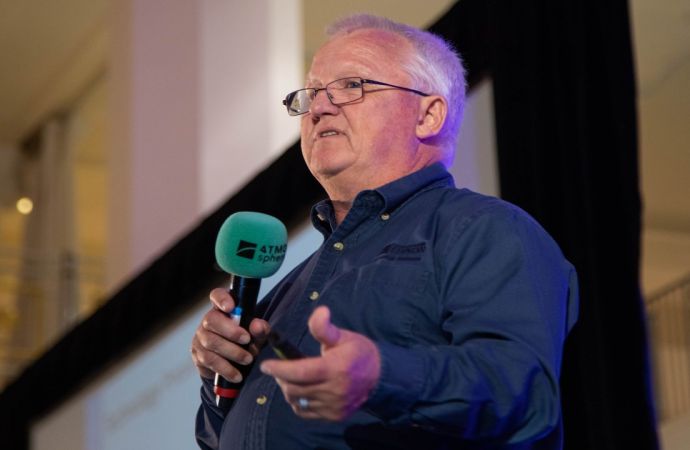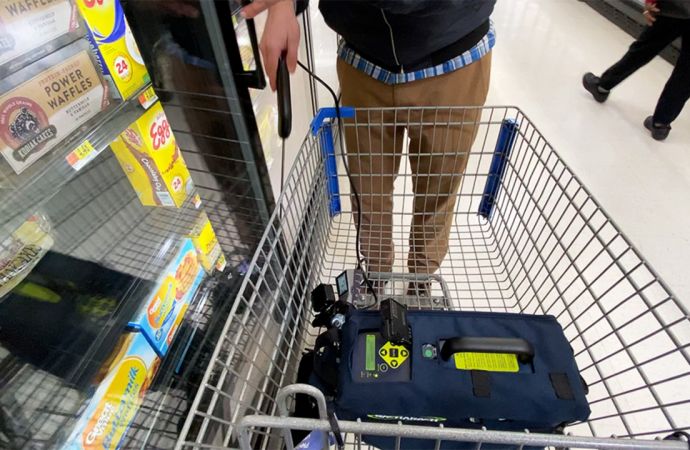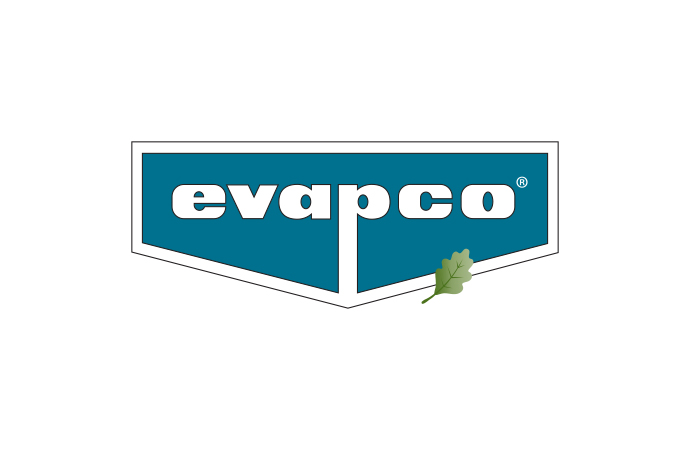At last week’s Meeting of the Parties to the Montreal Protocol in Geneva, Switzerland, countries did not make the grade with regards to reaching a global agreement on taking action on HFCs. This might not come as a surprise, as the treaty operates by consensus. Yet the debate did advance, with countries discussing HFC amendment proposals in an informal setting, as well as requesting more information on the availability of environmentally sound alternatives to ozone depleting substances (OD

On the occasion of last week’s Meeting of the Parties to the Montreal Protocol on Substances that Deplete the Ozone Layer that marked the treaty’s 25th anniversary, several Parties underlined the success of the Protocol, which has achieved universal ratification, builds on science and the principle of common yet differentiated responsibilities and has already contributed to climate protection. Several also highlighted that the success of the Protocol would be conditional on it addressing the challenges that lie ahead, and in particular the climate impact of the technologies that have been adopted as a result of the treaty.
Amendment proposals to control HFCs discussed in informal setting
For the fourth consecutive year, delegates discussed proposals to amend the Montreal Protocol to control HFCs. Two such proposal had been submitted ahead of the meeting by the Federated States of Micronesia on the one hand, and a joint proposal by Canada, Mexico and the US on the other.
While taking action on HFCs was described as a “moral obligation” by some Parties, others maintained that the Montreal Protocol is not the right forum to address climate warming gases such as HFCs and said they looked at the UNFCCC and its Kyoto Protocol for the matter.
Like in previous years, they opposed the establishment of a “contact group”, where countries would formally discuss and work towards actionable decisions. However, for the first time this year an “informal discussion group” was formed, where countries had the chance to deliberate on the benefits and concerns with regards to taking global action on HFCs.
In this informal setting, several delegates emphasised that today we know much more about HFC alternatives than what the Parties knew about ODS alternatives when they decided to take action on ODS. The proponents of the amendment proposals argued that the proposed HFC phase-down with a plateau as opposed to a phase out takes into account that replacements might not be available in every sub-sector (e.g. some military uses), allows time for additional replacement options to be developed, while schedules could be subsequently adapted in light of technological progress.
Nonetheless, several of the countries that opposed action on HFCs, reiterated concerns about the availability of HFC alternatives and uncertainty with regards to emerging technologies.
Parties request further scrutiny on the availability of alternatives
To address concerns regarding the availability of alternatives, the Parties adopted a decision requesting “additional information on alternatives to ozone-depleting substances”. After 7.5 hours of consultations in an official contact group setting, the Parties managed to reach an agreement and close the differences in diverse views expressed.
The decision requests the Technology and Economic Assessment Panel (TEAP) to prepare a report describing “all available alternatives to ODS that are commercially available, technically proven, environmentally-sound, taking into account their efficacy, health, safety and environmental characteristics, cost-effectiveness, and their use including in high ambient temperatures and high urban density cities“. The report should also “identify barriers and restrictions to the adoption and commercial use of certain environmentally-sound alternatives to ODS […] and identify the opportunities for the selection of environmentally-sound alternatives to HCFCs in the future”.
Other potential HFC-related decisions suspended until next meeting
Montreal Protocol Parties also deliberated on a proposed decision on clean production of HCFC22 by means of demonstration projects to eliminate by-product HFC23 emissions and a study on potential costs and benefits of controlling such emissions. Again arguments that HFC23 emissions do not fall under the scope of the Montreal Protocol were put forward against taking a decision on this topic, which will be taken up by the Parties at the 33rd Open Ended Working Group (OEWG33) meeting in Summer 2013.
Another topic that the Parties could not reach agreement on and will be taken up at OEWG33 is a proposal “on additional funding for the MLF [Multilateral Fund] to maximize the climate benefit of the accelerated phase-out of HCFCs”.
105 countries support transition to low GWP substances
In the course of the meeting, the government of Indonesia gave an update on the status of the “Bali Declaration on Transitioning to Low Global Warming Potential Alternatives to Ozone Depleting Substances”, that it had put forward at last year’s Meeting of the Parties.
Already 105 countries have supported in writing the Declaration, which calls on the Parties “to explore further and pursue under the Montreal Protocol the most effective means of achieving the transition to low global warming potential alternatives”. In addition, several other countries have provided oral support.
Amendment proposals to control HFCs discussed in informal setting
For the fourth consecutive year, delegates discussed proposals to amend the Montreal Protocol to control HFCs. Two such proposal had been submitted ahead of the meeting by the Federated States of Micronesia on the one hand, and a joint proposal by Canada, Mexico and the US on the other.
While taking action on HFCs was described as a “moral obligation” by some Parties, others maintained that the Montreal Protocol is not the right forum to address climate warming gases such as HFCs and said they looked at the UNFCCC and its Kyoto Protocol for the matter.
Like in previous years, they opposed the establishment of a “contact group”, where countries would formally discuss and work towards actionable decisions. However, for the first time this year an “informal discussion group” was formed, where countries had the chance to deliberate on the benefits and concerns with regards to taking global action on HFCs.
In this informal setting, several delegates emphasised that today we know much more about HFC alternatives than what the Parties knew about ODS alternatives when they decided to take action on ODS. The proponents of the amendment proposals argued that the proposed HFC phase-down with a plateau as opposed to a phase out takes into account that replacements might not be available in every sub-sector (e.g. some military uses), allows time for additional replacement options to be developed, while schedules could be subsequently adapted in light of technological progress.
Nonetheless, several of the countries that opposed action on HFCs, reiterated concerns about the availability of HFC alternatives and uncertainty with regards to emerging technologies.
Parties request further scrutiny on the availability of alternatives
To address concerns regarding the availability of alternatives, the Parties adopted a decision requesting “additional information on alternatives to ozone-depleting substances”. After 7.5 hours of consultations in an official contact group setting, the Parties managed to reach an agreement and close the differences in diverse views expressed.
The decision requests the Technology and Economic Assessment Panel (TEAP) to prepare a report describing “all available alternatives to ODS that are commercially available, technically proven, environmentally-sound, taking into account their efficacy, health, safety and environmental characteristics, cost-effectiveness, and their use including in high ambient temperatures and high urban density cities“. The report should also “identify barriers and restrictions to the adoption and commercial use of certain environmentally-sound alternatives to ODS […] and identify the opportunities for the selection of environmentally-sound alternatives to HCFCs in the future”.
Other potential HFC-related decisions suspended until next meeting
Montreal Protocol Parties also deliberated on a proposed decision on clean production of HCFC22 by means of demonstration projects to eliminate by-product HFC23 emissions and a study on potential costs and benefits of controlling such emissions. Again arguments that HFC23 emissions do not fall under the scope of the Montreal Protocol were put forward against taking a decision on this topic, which will be taken up by the Parties at the 33rd Open Ended Working Group (OEWG33) meeting in Summer 2013.
Another topic that the Parties could not reach agreement on and will be taken up at OEWG33 is a proposal “on additional funding for the MLF [Multilateral Fund] to maximize the climate benefit of the accelerated phase-out of HCFCs”.
105 countries support transition to low GWP substances
In the course of the meeting, the government of Indonesia gave an update on the status of the “Bali Declaration on Transitioning to Low Global Warming Potential Alternatives to Ozone Depleting Substances”, that it had put forward at last year’s Meeting of the Parties.
Already 105 countries have supported in writing the Declaration, which calls on the Parties “to explore further and pursue under the Montreal Protocol the most effective means of achieving the transition to low global warming potential alternatives”. In addition, several other countries have provided oral support.
MORE INFORMATION
Related stories












